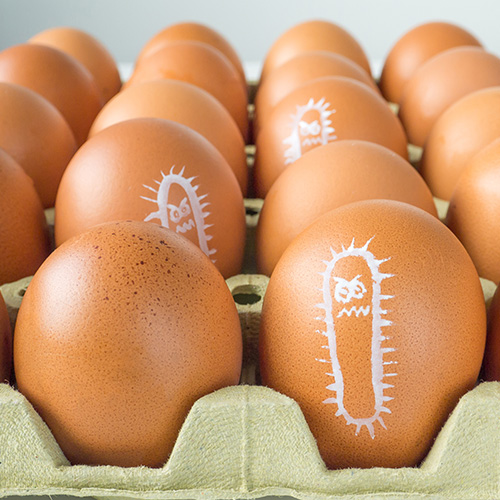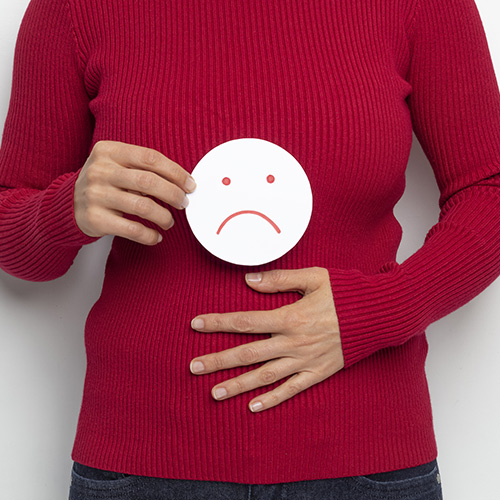
Food Safety Focus: Eggs
Author: be well™ with Big Y® Registered Dietitian Team
Many dishes of the Easter holiday center around, or include, eggs. When it comes to handling these fragile gifts of nutrition royalty, there is one aspect to keep front and center: food safety. You may be surprised by how many things you do that could be putting you and your family at risk. Below are our team’s tips for cooking and celebrating with eggs.
What Makes Eggs a Food Safety Concern?

The primary culprit at odds with keeping you and your family foodborne illness-free when it comes to eggs is the bacteria Salmonella. This little bugger can be found both on the surface of the shell and inside with the yolk and white. Luckily, as long as raw eggs are handled properly, you can reduce your health risk.
Easter invites unique activities like egg dying and hunts. Since the number of individuals handling raw eggs during the holiday increases, as does the number of times (and duration of time) eggs may be kept out of refrigeration, the risk for foodborne illness heightens.
How Prevalent Are Salmonella Infections?

The Centers for Disease Control and Prevention1 cites an estimated 1.35 million infections, 26,500 hospitalizations and 420 deaths are caused by Salmonella. The primary source of Salmonella infections is foodborne, meaning it comes from the foods we eat.
What Does a Salmonella Infection Look Like?1

During a Salmonella infection, individuals can experience stomach cramps, vomiting, diarrhea and fever. Symptoms can occur 6 hours to 6 days after ingesting an infected food. Although most individuals will recover after 4 to 7 days, those with compromised immune systems (such as children, older adults and individuals with chronic medical conditions) may be hospitalized and/or succumb due to the infection and symptoms.
Food Safety Tips for Handling Easter Eggs.

As mentioned above, Easter celebrations bring their own special circumstances when it comes to eggs. Below are tips for the general handling of eggs as well as when planning your holiday egg dying and egg hunt!
Egg Food Safety Basics.

Any time you buy, store and cook with eggs, you want to keep in mind the shells (and thereby their container!) could have Salmonella on them. This translates into the following tips:
#1: Purchase fresh eggs. Check the “Sell By” date on the side of the carton.
#2: Buy eggs free of cracks. The prospect of having Salmonella on an eggshell means the bacteria can transfer to inside the egg to the white and yolk when cracked. Also, the moment the eggshell cracks, the clock begins for when it needs to be prepared and consumed (within 2 hours on cooler days when the temperature is below 90 degrees Fahrenheit).
#3: Place eggs on the cart bottom. This way if eggs crack and spill during your grocery shopping, they won’t contaminate any other groceries.
#4: Give eggs their own bag. The same as raw chicken, meat, etc., you want to wrap eggs in their own bag in case they break during travel from store to home.
#5: Store eggs inside the refrigerator, not the door. The temperature of foods stored in your refrigerator door can fluctuate, especially as the door opens and closes.
#6: Keep eggs refrigerated until use. Eggs shouldn’t stay out of refrigeration longer than 2 hours (or 1 hour for days that are 90 degrees Fahrenheit or warmer).

#7: Verify your refrigerator is cold enough. Perishable foods, including eggs, need to be stored at or below 40 degrees Fahrenheit. Verify by keeping an appliance thermometer in your refrigerator.
#8: Keep raw eggs in their original packaging, not egg holders. There’s no need to risk transferring Salmonella elsewhere in your refrigerator- especially to foods that won’t be cooked like fruits and vegetables.
#9: Never reuse egg cartons. This goes for arts and crafts and storing hard-boiled eggs. Again, Salmonella may be on the surface of where the raw eggs were held in the carton. It will not magically disappear once the raw eggs are removed. Buy empty egg cartons from craft stores for creative projects. Place cooked eggs in their own uncovered, clean container inside the refrigerator.
#10: Reach proper cooking temperatures. For recipes using eggs, always reach at least 160 degrees Fahrenheit as verified with an instant-read food thermometer. When cooking your morning eggs, be sure the yolk and white are firm and not runny.2
#11: Stay “taste” free. The risk of Salmonella infection isn’t worth throwback memories of licking the spatula and mixer beaters covered in raw cookie dough and brownies.
#12: Wash your hands…wash your hands…ah hem, wash your hands. Whenever you touch raw eggs, wash your hands for 20 seconds immediately after. Whenever you touch uncooked recipes containing raw egg, wash your hands for 20 seconds immediately after. The opportunity to stop the spread of Salmonella onto other surfaces and foods is literally in your hands—take it!
Food Safety Tips When Dying Easter Eggs.

Now that you know the best tips for handling raw eggs, learn how to hard-boil eggs like a pro. Here are steps from our partners at the Partnership for Food Safety Education:3
- Fill water at least an inch above a single layer of raw eggs in your saucepan or Dutch oven.
- Cover, bring water to a boil and remove pan from heat source. Let stand for 15 minutes (for large eggs).
- Cool eggs under cold running water until they reach a comfortable temperature to handle. Store cooled eggs in an uncovered, clean container in the refrigerator to air dry.
When it’s time to dye your dry, hardboiled eggs, decide if you’re going to use food-grade dye or make your own all-natural dye from foods like beets, red cabbage, onions, etc. Want to learn more about dying eggs with foods you have on hand? Check out our article “A Safe & Natural Easter Egg Hunt” article.
Food Safety Tips for Your Easter Egg Hunt.3

Nothing’s much more adorable than kids on the hunt for (and finding) Easter eggs. When using hardboiled eggs, keep these tips in mind:
- Choose the right spot! Be mindful to keep hidden eggs away from dirt, pets and sources of harmful bacteria and chemicals.
- If eggs will be consumed after the hunt, be sure they are rinsed and placed back into refrigeration within their 2-hour food safety window.
Published 4/3/2023


